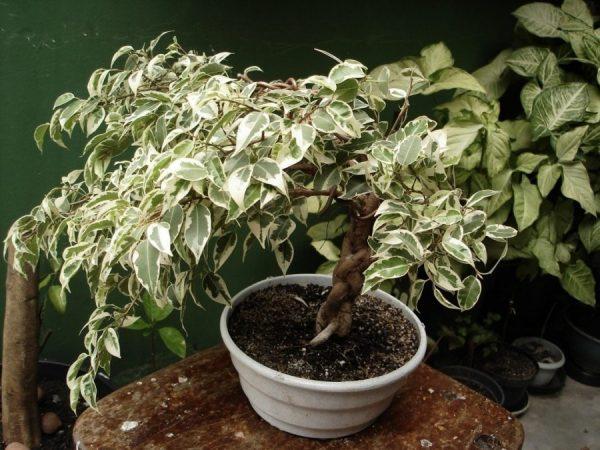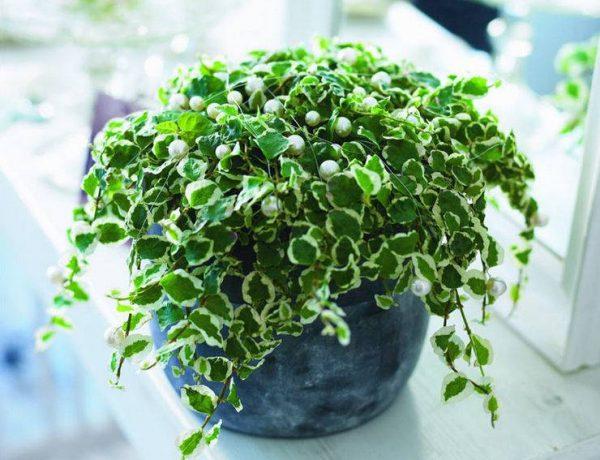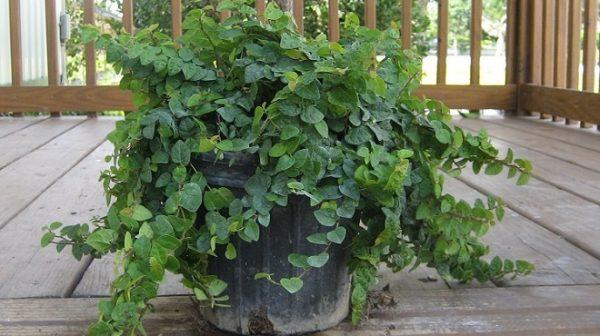Ficus is one of the most famous indoor plants. It comes from tropical regions and is a relative of the common fig (Ficus empress). According to Feng Shui, Ficus brings happiness, health, and well-being to the home.
There are several types of ficus that are used for indoor growing. We will mention some of the most famous ones below, and each one more or less requires the same care
Ficus Benjamin
Ficus Benjamin with its interesting appearance and simplicity is one of the favorite houseplants. It can be grown as a large or as a small bonsai tree. It is one of the plants that improve indoor air quality, however, has a negative side, it is the third-largest source of allergens, after dust and pets.
There are several different varieties of this ficus and the most famous are:
Midnight Beauty, Starlight, Monique

Well-drained soil is required to plant this type of Ficus, and a peat-sand mixture of 2: 1 is recommended. Ficus Benjamin should be transplanted into a larger pot every second or third year in the early spring. After transplanting, Ficus may reject a large portion of the leaf, but if you provide it with favorable conditions, it will quickly recover.
For optimal growth and development, it requires plenty of daylight, but without the influence of direct sunlight. It is extremely sensitive to displacement, and any change in position is a shock to the plant and results in yellowing and leaf fall. Ficus Benjamin from spring to autumn should feed every two weeks with fertilizer for leafy plants, and the instructions of the fertilizer manufacturer should be followed.
It should be watered when the soil is dry, no matter how many days have passed since the last watering. It is important to make sure that the water doesn’t stay in the dish under the pot for long because the high humidity favors the development of many plant diseases. Yellowed leaves should also be removed regularly. If a more beautiful crown shape is desired, the Ficus should be pruned during the winter months. On the place of the cut a white fluid appears, which may cause an allergic reaction to the skin, so it should be thoroughly washed immediately after pruning. Occasionally, the accumulated dust on the leaves should be removed, and this is best done by spraying with rainwater or distilled water at room temperature. Ficus spraying with soft water is just as important as watering.

Ficus Elastica
Ficus Elastica is a tree of the Moraceae family. It comes from eastern India, and it is also called Indian ficus. In its natural habitat, it can grow from 30 to 60 meters, creating a trunk 2 meters wide. It is a very resistant plant that has large alternating, glossy, leathery and dark green leaves. The leaves can be up to 35 cm long and about 15 cm wide. They have a pointed top and pronounced central veins that appear as a red top of the stem that slowly unwinds.
There are several varieties of this Ficus, and the most famous are:
Black prince – a cultivar with almost black leaves
Decora – a cultivar with dark leaves that can be up to 30 cm long
Doescheri – cultivar with leaves elongated to ovoid. The leaves are light green in color, streaked with white, gray-green and yellow spots
Robusta – Has slightly larger leaves than Decora cultivars
Schrijveriana – cultivar with leaves covered with cream stains

When grown as a houseplant in a flowerpot it can grow up to 2 meters. It consumes a lot of oxygen so it is not recommended to keep it in bedrooms. Ficus Elastica should be planted in an airy and well-drained substrate. The best is a mixture of peat, coarse sand and pine bark in a 1: 1: 1 ratio. It is transplanted when the roots outgrow the pot, usually every two years. The transplant can be done in spring from May to June, and you can change the substrate once a year if needed. When the plant starts to grow tall, it is usually necessary to support and tie the trunk and branches to grow upright. The ideal position for the ficus are bright spaces in the home but without direct sunlight. The ideal room temperature is 15-24 ° C, while temperatures below 12 ° C are not good for growing this ficus. Ficus elastic can be propagated by taking cuttings. Cuttings can be taken in late spring or early summer. They should be 10 to 20 cm long, the lower leaves should be removed and the cuttings should be planted in the ground in a place at a temperature of 20 to 24 ° C.
Care of the Ficus Elastica is quite simple. The biggest mistake you can make when it comes to this type of plant is to over-water the plant or move it too often. The Ficus should be watered when you notice that the soil has become slightly dry to the touch. It is important to make sure that the ficus pot has enough holes to allow excess water to flow freely. You can spray ficus leaves in the summer to improve humidity. During spring and summer should be used a liquid fertilizer every two weeks. Once it reaches the desired height, you can cut the top. You can also cut individual branches to give the plant a nicer shape. The best time to prune is in the spring or summer. From time to time it is necessary to gently clean the ficus leaves with lukewarm water and a soft cloth or sponge. When watering it excessively, the leaves turn yellow and fade, due to lack of light, they get a chlorotic color, and healthy greens fall off when the plant is in a windy place.

Ficus Pumila
The Ficus Pumila is an evergreen tree whose natural habitats are eastern Asia and southeastern North America. It has a creeping stem that can grow up to 4 meters in length. The leaves of the plant are ovoid, about 3 cm long.
Popular varieties of Ficus Pumila are:
Ficus Pumila Curly, Ficus Pumila Quercifolia, Ficus Pumila Variegata

In mild climates, it is grown outdoors as a climber. However, since it doesn’t tolerate cold temperatures and frost, in colder countries can be grown indoor. It is planted in ordinary garden soil with the addition of some peat and sand. Since it is a climber plant, it can be grown with support for climbing or in hanging pots. The best time to transplant is in early spring after the plant has completed its dormancy phase. The Ficus or the Ficus Pumila can be propagated by cuttings taken in early spring. These plants don’t suit very shaded positions or too much direct sunlight. It is suitable for spaces with increased humidity like a greenhouse. Also, it is a great plant for terrariums. Watering should be done when the soil is dry. Ficus Pumila grows rapidly, and it is recommended cutting occasionally. Cutting will not harm the plant and can be done every year.

Fikus Lyrata
Ficus Lyrata is a lesser-known but very interesting type of ficus that attracts attention with its form and fits well with all interiors. It is coming from rain forests of West Africa. It has a thin tree and large, lush leaves that can be up to 50 cm large. Ficus Lyrata at home reaches a height of 2 meters or more. For successful cultivation, place the Ficus in a place where it will be exposed to indirect sunlight for 6-8 hours a day. The best-suited places are the east windows in the home, and the plant should be rotated every week or two in order for the tree to grow upright, rather than leaning toward the sun.

It should be watered only when you notice that the soil is extremely dry. Ficus Lyrata should be placed in a place where it will be protected from cold, drafts, but also excessive heat. If the temperature doesn’t suit him, the leaves will begin to fall. It is propagated by cuttings. As it grows rapidly, the height of the plant should be controlled by shortening the root. The plant should be removed gently from the pot, trim the roots and then returned to the pot. Root shortening can be done every year during the summer months. If you want the Ficus to grow in the form of a bush, you can prune the stems in early spring. Ficus Lyrata should feed with liquid fertilizer once a month during spring and summer. Don’t leave water on the leaves, as this can lead to yellow spots and fungi. The leaves should occasionally be wiped with a soft dry cloth and all dried leaves should be removed.

Ficus Benjamin has been growing with my mom for several years, a very unpretentious plant that adorns the interior. She has three flowers and all are different.